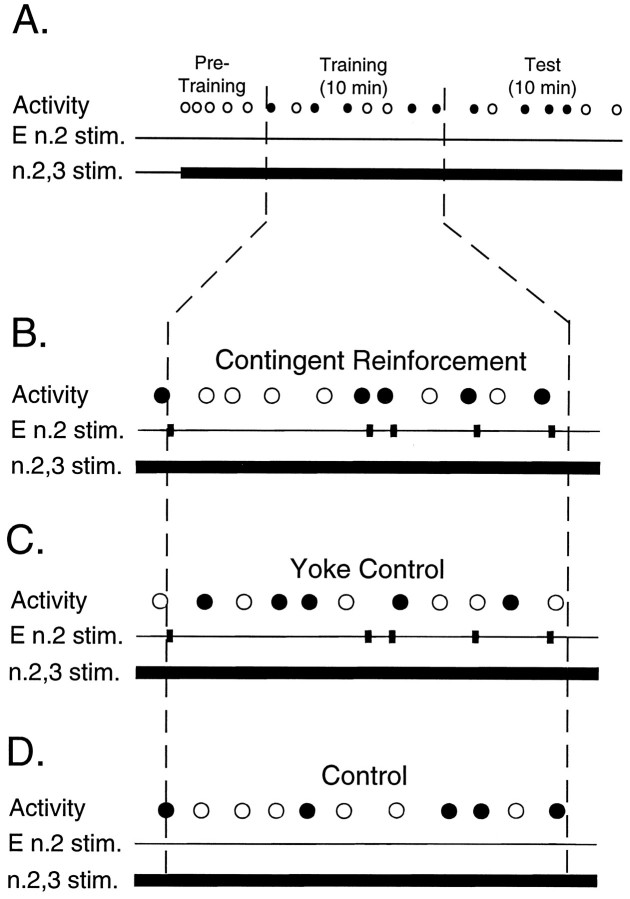Fig. 4.
Experimental paradigms for neural analog of operant conditioning. A, In all paradigms, tonic stimulation of n.2,3 (n.2,3 stim.) was delivered throughout the experiment. The type of patterned activity induced by stimulation of n.2,3 was represented by black circles(pattern I) or by white circles (pattern II and intermediate patterns). Experiments were divided into three periods: a pretraining period (Pre-Training), a 10 min training period (Training), and a 10 min test period (Test), which immediately followed the training period. In a single block of three matched preparations, each preparation received one of the different stimulus paradigms (i.e.,Contingent Reinforcement, B; Yoke Control, C; Control, D). B, Contingent reinforcement. During the training period phasic (10 Hz, 6 sec) stimulation of E n.2 (black squares on E n.2 stim.) was delivered immediately after expression of each pattern I (black circles). In an experimental block the beginning of the training period was determined by the first occurrence of a pattern I and the contingent stimulation of E n.2.C, Yoke control. Stimulation of E n.2 (black squares in E n.2 stim.) was applied with the same parameters and the same timing as that in the contingent stimulation paradigm (compare E n.2 stim. with that inB). In this paradigm, however, E n.2 stimulation was not contingent with any specific pattern; rather, it was “yoked” to the previous contingent-stimulation preparation in the block.D, Control. In this paradigm, no stimulation of E n.2 was delivered.

